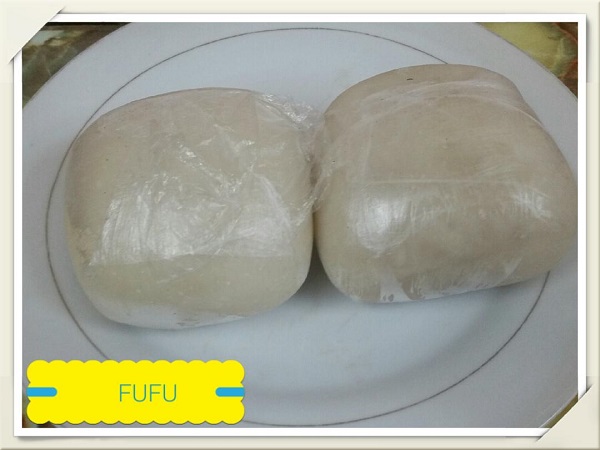Purple Fruits and Vegetables ~ the Newest Super Foods
Purple Fruits and Vegetables ~ the Newest Super Foods

Eating the rainbow entails consuming a wide range of fruits and vegetables, including purple foods.
Colors always contribute to sensory appeals, but there is a lot of science behind purple foods that explain a variety of health benefits.
Purple vegetables and fruits are becoming more popular as a food trend. Their popularity stems not only from their eye-catching color but also from their nutritional value!
The purple color of fruits and vegetables indicates a high antioxidant content, which may aid in overall health and the prevention of diseases such as heart disease, stroke, and cancer.
At the same time, nutritionists place a high value on purple vegetables and fruits for their health-promoting nutrients. Anthocyanins are the chemical name for these nutrients. They aid in the protection of cells as well as the healing of the body.
According to one study, this color of foods helps to improve eye and heart health, reduce cancer cell proliferation, boost mental power, and reduce the risk of diabetes.
Table of Contents
Purple Fruit Benefits
Purple fruits are becoming more popular as a dietary supplement. Their appeal stems not only from their eye-catching color but also from their nutritional value.
Colors usually appeal to the senses, but purple fruits have a lot of science to back them up, explaining a variety of health benefits.
People have begun to approach these brightly colored foods as awareness grows. So, what are you waiting for? Come join this community of some of the most common, nutritious, and tasty purple fruits and vegetables.
According to one study, this color of foods helps to improve eye and heart health, reduce cancer cell proliferation, boost mental power, and reduce the risk of diabetes.
What are the potential health benefits of eating purple foods?
This color group of foods has a high nutritional value.
Fruits and vegetables that are deep purple in color include eggplants and grapes. These foods may have a variety of health benefits, including a lower risk of heart disease and cataracts.
Purple fruits and vegetables are high in anthocyanins, which are natural plant pigments that give foods their distinctive color, according to registered dietitian Katherine Brooking for WebMD.
Anthocyanins have been shown in studies to benefit brain health, reduce inflammation, and fight cancer and heart disease.
According to Brooking, this tastes similar to white and green asparagus but is also high in vitamin C. The purple variety contains two primary anthocyanins and is high in antioxidants.
Here are some health advantages of purple fruits that may be beneficial to your health.
- Purple grapes: Purple grapes contain phytonutrients that may aid in the prevention of cancer cell growth, the reduction of cholesterol, and the reduction of platelet aggregation.
- Blackberries: Blackberries may help with digestion, fat loss, and inflammation. They are also high in vitamins A, C, and K. Blueberries may also improve mental function and are high in fiber.
- Blackcurrants: Blackcurrants are high in anthocyanins and may improve cholesterol levels and vision.
- Blueberries: This blue-purple fruit contains a high concentration of polyphenols, including flavonoids and phenolic acids. Blueberries may have anti-inflammatory and mood-boosting properties.
- Concord grape juice: According to Trusted Source, Concord grape juice may improve spatial memory, reaction time, and memory function. It may also help with relaxation.
- Figs: This Mediterranean fruit is good for your digestion, respiratory system, and reproductive health. Figs also aid in weight loss, inflammation reduction, and cancer prevention.
- Plums: Plums contain antioxidants that help with bone health, digestion, and inflammation. They also aid in the reduction of blood pressure and blood sugar levels.
- Acai berries: Acai berries have the potential to improve cognitive function, heart health, and cholesterol levels.
The Bottom Line
Purple fruits and vegetables have numerous health benefits and can help to diversify a healthy diet.
Purple vegetables are high in vitamins, minerals, and fiber. They contain anthocyanin, which is beneficial to brain health, inflammation, and heart disease.
Purple foods may also improve calmness and mood, giving people even more reasons to include them in their diet.
As health concerns have grown, so has public awareness of the importance of eating a healthy diet.
However, as part of choosing a healthy diet, people are increasingly turning to organic options.
And organic food is in high demand all over the world. As a result, producers are investing in organic purple vegetables and fruits.
What are violet fruits? 8 Bonus Purple Fruits
- Purple grapes.
- Blackberries (most have a purple tinge)
- Pomegranates
- Black currants.
- Purple dragon fruit
- Plums
- Passion fruit.
- Figs
It is critical to understand that the color of fruit indicates the presence of antioxidants. The deeper the coloring, the higher the antioxidant level.
FAQs
What is the name of a purple fruit?
Blackberries
Among the most well-known purple fruits are blackberries. These juicy berries are high in nutrients and anthocyanin pigments.
This purple-skinned fruit has a bright yellow interior with sweet and sour seeds that are high in antioxidants and flavor.
What exactly is a dark purple fruit?
Dark Purple Fruit has four solutions. The most likely solution to the clue is ACAI.
What berries are purple?
Although blueberries are the most widely researched berry in this “purple” group, blackberries, bilberries, acai berries, maqui berries, elderberries, and even berries with less “purple,” such as raspberries, strawberries, and cranberries, are all valued for their impressive brain-boosting benefits.
What Purple Fruit Grows On Trees?
The edible fruit of the jabuticabeira (Plinia cauliflora), also known as the Brazilian grape tree, is known as jabuticaba.
The tree’s purplish-black, white-pulped fruit grows directly on the trunk. It can be eaten raw or made into jellies, jams, juice, or wine.
What Are Some Purple Foods? Top 6 Purple Foods You Should Be Eating
- Purple Cabbage. Purple cabbage or also known as red cabbage gets its vivid purple color from its anthocyanins. …
- Blackberries are a popular purple fruit loaded with many nutrients and antioxidants
- Purple Cauliflower.
- Elderberries
- Purple Potatoes
- Purple Grapes
What purple fruit aids in weight loss?
Purple fruits and vegetables, such as blackberries, Concord grapes, acai berries, and plums, are excellent additions to any diet.
What is the purpose of purple fruit?
Purple fruits and vegetables are high in anthocyanins, which are natural plant pigments that give foods their distinctive color, according to registered dietitian Katherine Brooking for WebMD.
Anthocyanins have been shown in studies to benefit brain health, reduce inflammation, and fight cancer and heart disease.
List of purple vegetables
Purple vegetables are high in vitamins and have numerous health benefits.
- Beetroot: Anti-inflammatory properties of beetroot. They may also aid in the reduction of blood pressure and the improvement of heart health. Beets may also help to prevent cancer, improve digestion, and improve gut health.
- Red cabbage: This vibrant purple vegetable may aid in the prevention of diseases such as cancer. Red cabbage can also help to reduce inflammation, which is linked to cardiovascular disease.
- Purple corn: Purple corn may aid in the prevention of diabetes and certain cancers. It can also help with weight loss, inflammation reduction, and vision improvement
- Purple potatoes may help reduce inflammation and reduce the risk of colon cancer.
- Sweet potato purple: Purple sweet potatoes’ high anthocyanin content accounts for their high antioxidant activity. The vegetable may aid in the reduction of inflammation and the enhancement of immunity.
- Purple carrots are high in phytonutrients, including anthocyanin. Purple carrots are also high in alpha and beta carotene, which may help with immunity and eye health.
- Eggplant: Eggplant is high in antioxidants and phytochemicals, such as ascorbic acid, phenolics, and flavonoids. Its polyphenol content may aid in the prevention of liver damage. Eggplant may also aid in the treatment of inflammatory conditions such as bronchitis and asthma.
Risks and considerations for side effects
Purple fruits and vegetables are safe for most people when consumed in moderation. They contain carbohydrates, which can be harmful in large quantities.
Purple foods, on the other hand, contain complex carbohydrates that are generally healthy and a good alternative to refined carbohydrates like white rice.
Which Body Part Benefits the Most from Purple Fruits?
Anthocyanin, found in purple fruits and vegetables, has been shown to improve brain health, inflammation, and heart disease.
What is the definition of a purple fruit or vegetable?
Other foods with similar benefits include figs, plums, grapes, and olives.
Purple can also be found in many common vegetables, including asparagus, potatoes, onions, and corn.
There is even a purple variety of rice with similar health benefits.
What kind of product is purple?
Anthocyanins are phytochemicals that give produce a deep red, purple, or blue hue.
They can be found in blueberries, cranberries, red cabbage, and plums.
What is the name of the purple vegetable?
Eggplant is a shiny, purple food. Eggplant is a more exciting vegetable than you might think, and it can add toothsome texture and flavor to your meals.
The skin contains anthocyanins and other nutrients. So make certain to keep the skin on when using eggplant
Benefits of blue and purple fruits and vegetables
Blue and purple fruits and vegetables are beneficial in the prevention of heart disease, stroke, and cancer.
Blue and purple fruits and vegetables are extremely beneficial to memory and promote healthy aging.
This food also protects the urinary tract and maintains proper digestion.


